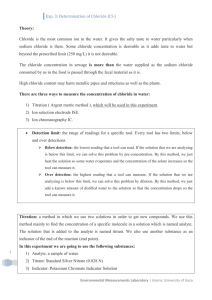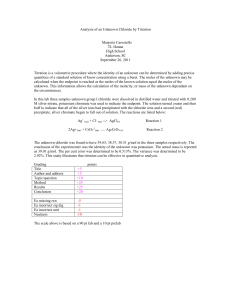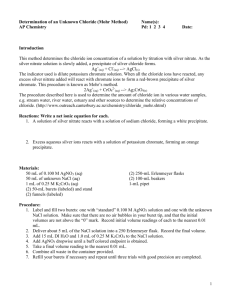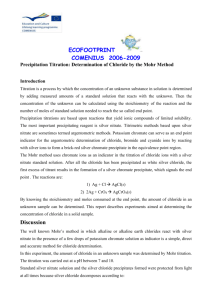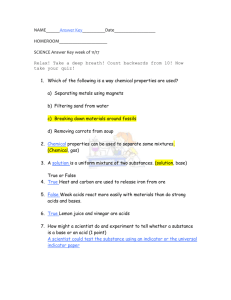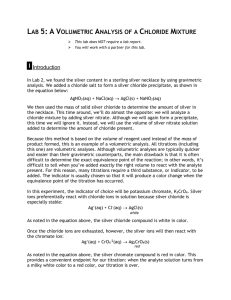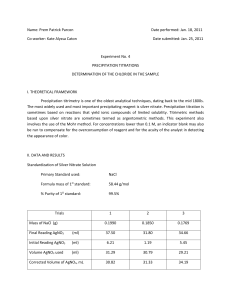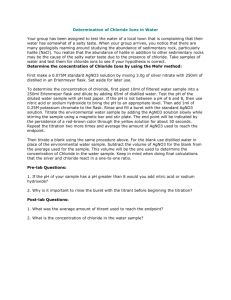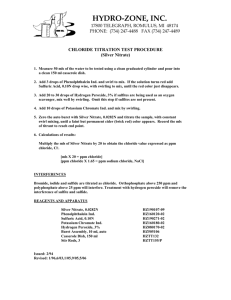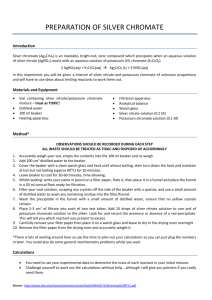Exp. 3: Determination of Chloride (Cl-)
advertisement
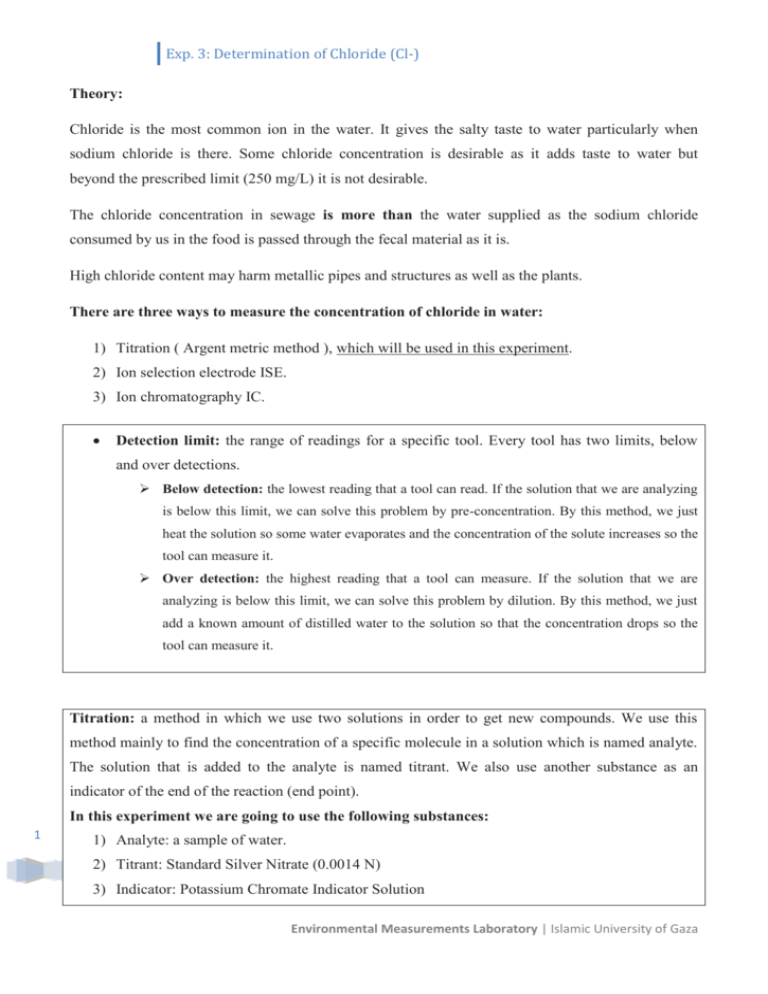
Exp. 3: Determination of Chloride (Cl-) Theory: Chloride is the most common ion in the water. It gives the salty taste to water particularly when sodium chloride is there. Some chloride concentration is desirable as it adds taste to water but beyond the prescribed limit (250 mg/L) it is not desirable. The chloride concentration in sewage is more than the water supplied as the sodium chloride consumed by us in the food is passed through the fecal material as it is. High chloride content may harm metallic pipes and structures as well as the plants. There are three ways to measure the concentration of chloride in water: 1) Titration ( Argent metric method ), which will be used in this experiment. 2) Ion selection electrode ISE. 3) Ion chromatography IC. Detection limit: the range of readings for a specific tool. Every tool has two limits, below and over detections. Below detection: the lowest reading that a tool can read. If the solution that we are analyzing is below this limit, we can solve this problem by pre-concentration. By this method, we just heat the solution so some water evaporates and the concentration of the solute increases so the tool can measure it. Over detection: the highest reading that a tool can measure. If the solution that we are analyzing is below this limit, we can solve this problem by dilution. By this method, we just add a known amount of distilled water to the solution so that the concentration drops so the tool can measure it. Titration: a method in which we use two solutions in order to get new compounds. We use this method mainly to find the concentration of a specific molecule in a solution which is named analyte. The solution that is added to the analyte is named titrant. We also use another substance as an indicator of the end of the reaction (end point). In this experiment we are going to use the following substances: 1 1) Analyte: a sample of water. 2) Titrant: Standard Silver Nitrate (0.0014 N) 3) Indicator: Potassium Chromate Indicator Solution Environmental Measurements Laboratory | Islamic University of Gaza Exp. 3: Determination of Chloride (Cl-) Apparatus: (i) Conical flask (ii) Burette (iii) Pipette (iv) Graduated cylinder (v) Funnel (vi) Beaker (vii) Hot plate stirrer Reagents: 1) Standard Silver Nitrate (0.0141N) Mix 2,395 mg of Silver Nitrate AgNO3 in distilled water and dilute it to 1000 ml. 2) Potassium Chromate Indicator Solution Dissolve 50 g of potassium chromate (K2CrO4) in distilled water and add it to silver nitrate solution till a perfectly red precipitate is obtained. Dilute it to 1000 ml and the indicator is read. 2 Procedure: 1) Take 100 ml of water sample 2) Add accurately 1 ml of potassium chromate indicator solution. Environmental Measurements Laboratory | Islamic University of Gaza Exp. 3: Determination of Chloride (Cl-) 3) Titrate against the standard AgNO3 solution till pinkish yellow precipitate of silver chromate (AgCrO4) appears in the water sample. 4) Note down the volume of silver nitrate consumed. Observations: Solution Initial burette reading Final burette reading Volume of AgNo3 Tap water Potable water Calculations: Where, V = Volume of titrate (Silver Nitrate) used in ml. N = Normality of AgNO3 = 0.0141 3 Environmental Measurements Laboratory | Islamic University of Gaza
